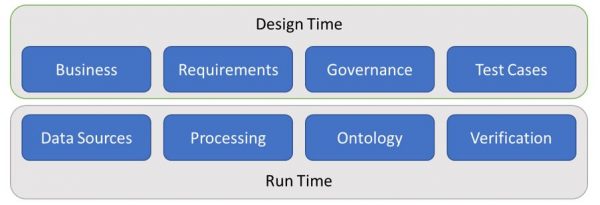Xtensible Leverages IEC CIM Semantics for Governed Ontology
Building data warehouses for utilities is a challenging endeavor. A large energy utility can have hundreds of operational systems, and thousands of data stores, each system with hundreds of tables, each table with many columns. To make this data available correctly in an analytic system, it must be understood. The sheer size of the effort is certainly part of the challenge, but it is just the tip of the iceberg. Add to this the fact that many operational systems do not make it easy to get data out, sometimes by design. If you are lucky, a system might have a programmatic interface made for integration. Often though, data scientists end up sifting through tables and columns searching for data gold. Business users might know where their critical data assets are located on reports and user interfaces, but technology experts are also needed to identify where it is stored in databases, and how to assemble and interpret the encoded values. Often, the best data is in a spreadsheet, assembled and augmented by hand from various sources. Add to that the fact that some systems contain records that are decades old, having gone through multiple migrations and conversions, having many historical and undocumented keys and references. At the same time, data about the same equipment and events might be stored in many systems, requiring complex cross-system logic to pull it all together to form a cohesive picture of the past. But this standard business ontology, defined and governed by all stakeholders, and verified by experts, is exactly what is needed to accurately evaluate the risks and opportunities that will lead to the best operational decisions.
Xtensible Solutions is supporting PG&E in their pursuit of ontology design and governance, towards the goal of documenting the transformations needed to load and standardize the analytics ontology data model, as well as verifying and certifying the results. The methodology contains design time artifacts, as well as run time implementations of the designs.

“For twenty years, Xtensible has been developing methods and tools for standards-based model-driven integration design,” said Steve Van Ausdall, Principal Consultant for Xtensible, and Data Architect on the project. “Meanwhile, infinitely scalable cloud-native platforms are delivering the performance needed to handle the load and complexity of processing more fine-grained semantics, making it possible to normalize and standardize thousands of entity, property, and value types, into a cohesive model for analytics. By embedding requirements and design into the agile development process, we can enable the iterative flexibility needed for speed while also providing the rigor to ensure results are correct.”
The vision for the governed ontology defines an auditable enterprise business data model, understood by business stakeholders, documenting the lineage, consolidation, and harmonization rules from multiple sources to the ontology. Once constructed, business decision makers can employ trusted data to inform decisions and prioritize the most important activities. Utility customers will benefit from fewer outages, better communication, and other operational efficiencies.
The benefits of utilizing a standard model like the IEC CIM for semantics of an enterprise ontology are many. Decades of work by numerous experts have resulted in an information model with very little conceptual redundancy. This means that great care was taken to ensure that each unique concept is modeled only once. Having this starting point for a target ontology model makes it much easier to determine when multiple sources need to be normalized (standardized) and combined. It also provides a silo and vendor-neutral target starting point, reducing the amount of time needed to agree on a standard representation.
The Ontology Design and Governance project is part of the Enterprise Data Foundation program, administered by PG&E.

